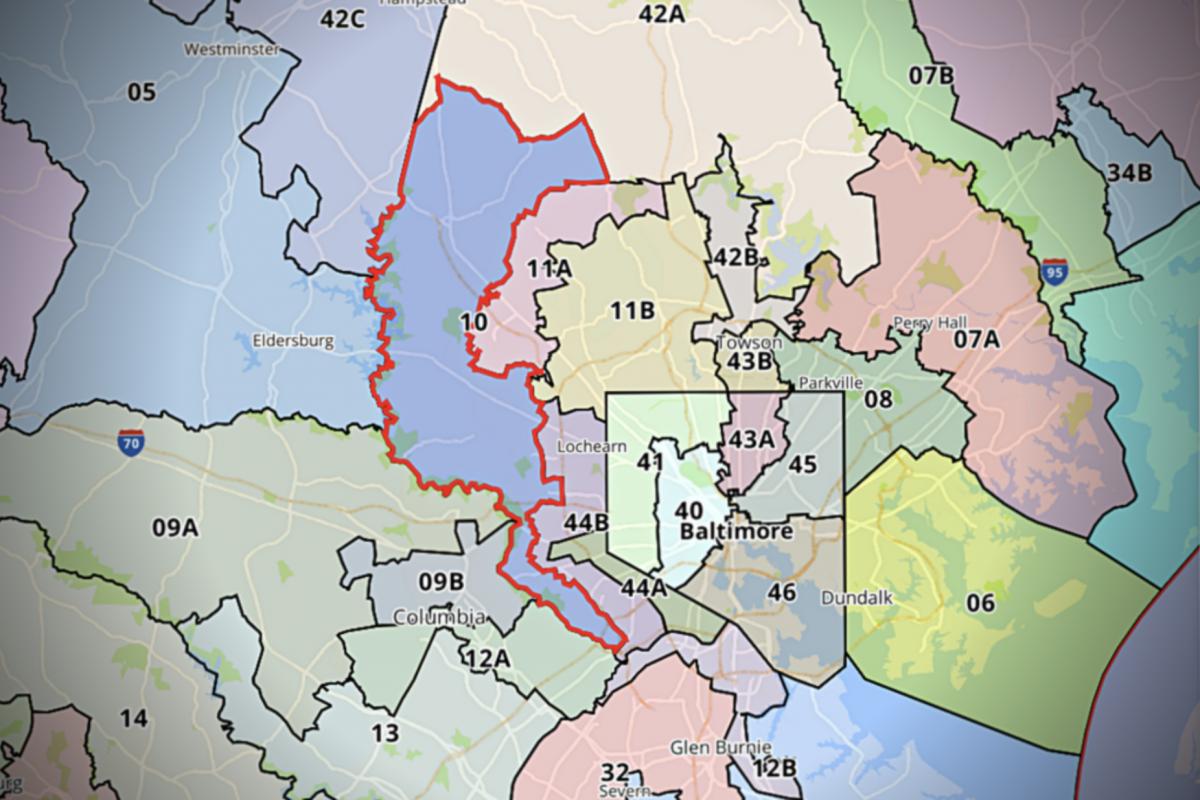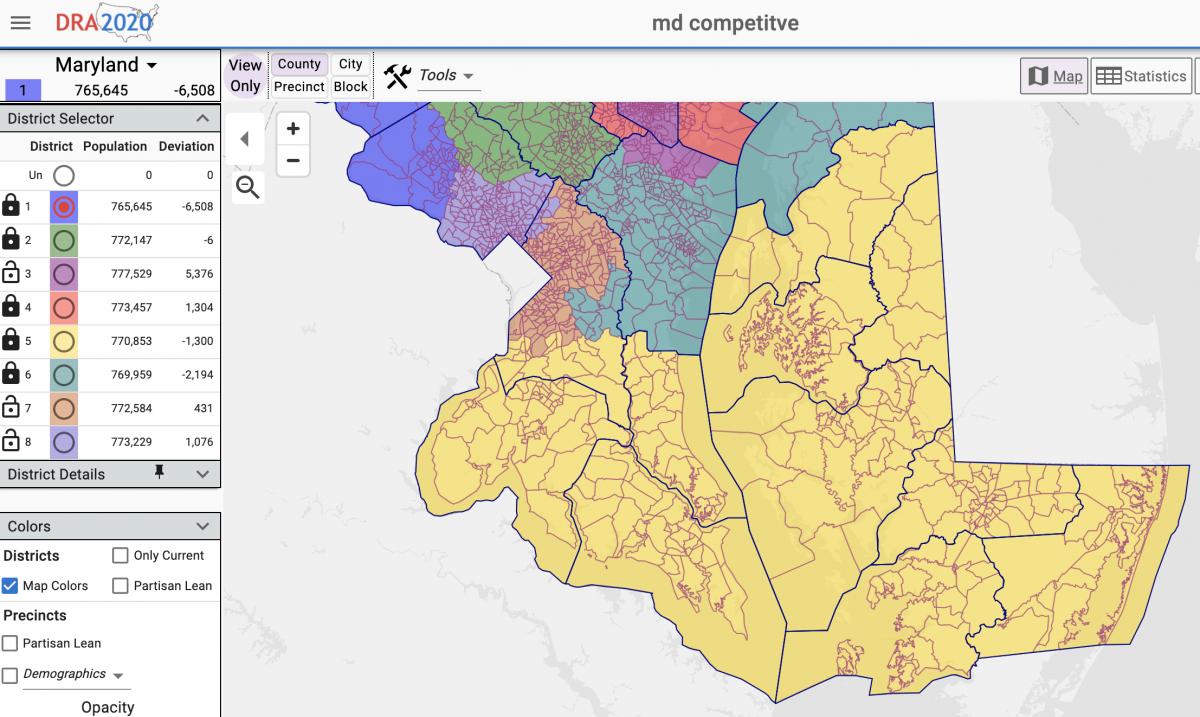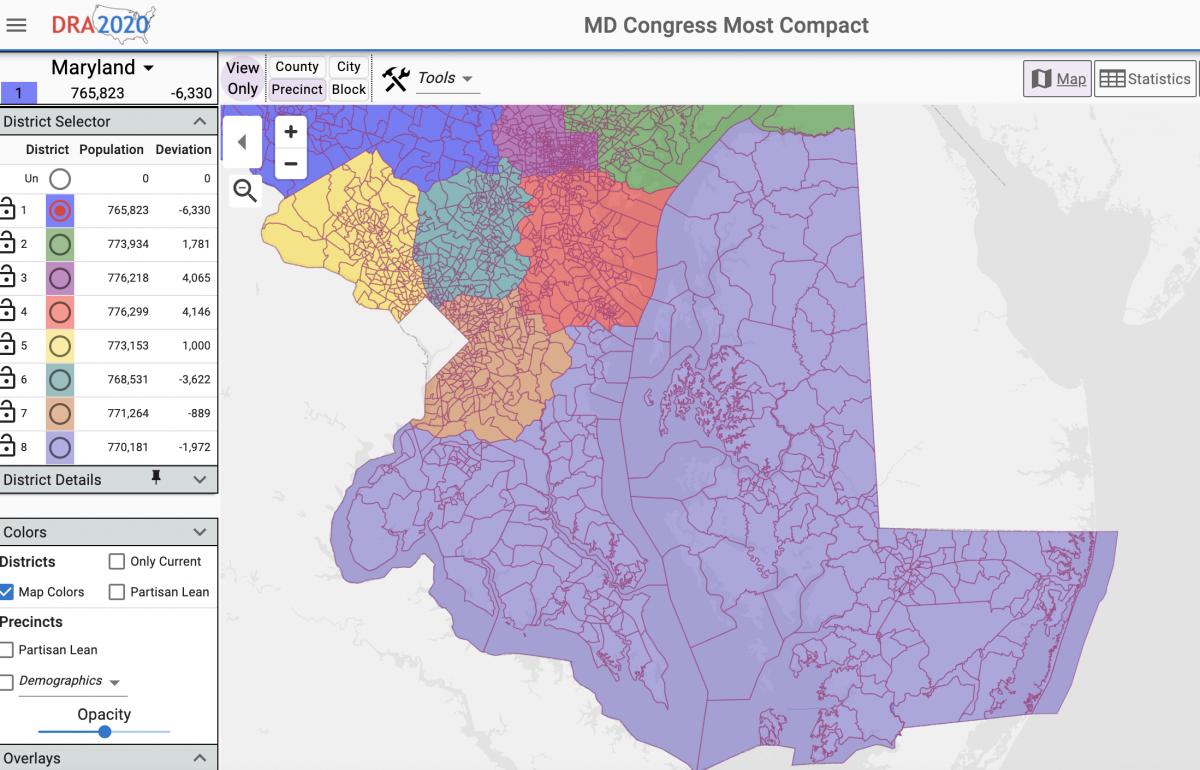The Legislative Redistricting Advisory Commission voted along party lines Friday to send their state legislative redistricting proposal to the General Assembly, with a new single-member district around Owings Mills in Baltimore County.
Baltimore County resident Linda Dorsey-Walker requested at a December public hearing that District 11 in Baltimore County, which is currently a multi-member district, be redrawn to include a single-member, majority Black district around Owings Mills.
“Owings Mills has 39,000 African Americans living in and around the area,” said Dorsey-Walker, who ran for the district in 2018 and finished fifth in a six-way primary. “That is almost enough for a single-member district by itself. Because of that, there is no particular reason why we should continue going on not having a minority elected.”
District 11 is currently represented by Democratic Dels. Lisa M. Belcastro, Jon S. Cardin and Dana M. Stein.
Commission Chair Karl Aro, a former head of the nonpartisan Department of Legislative Services, said at a virtual meeting Friday that the commission opted to include a single-member district around Owings Mills in response to that feedback and to comply with the federal Voting Rights Act.
There were other “minor changes” and tweaks to the proposed legislative map based on public feedback at the December hearing, Aro said, such as keeping a small area near Aberdeen in District 34 rather than moving it to District 35.
“It is based really on the districts that have been in existence for a long time, making the necessary changes for population, Voting Rights Act concerns,” and complying with constitutional requirements, Aro said.
Other changes the map makes from the current legislative districts include:
- Allocating just four full state Senate districts wholly within Baltimore City, while a fifth shared with Baltimore County. The city lost population over the last decade, and currently contains five full state Senate districts and a portion of another.
- District 9A, which currently includes roughly the northwestern half of Howard County and part of southern Carroll County, would lose Carroll County and instead extend into northern Montgomery County. The county retains eight state Senate districts in addition to gaining part of District 9.
- The city of Frederick would remain contained within District 3, which would become a strong Democratic multi-member district that would be completely encircled by the Republican-leaning multi-member District 4.
- Anne Arundel County’s District 33, which is currently a purplish district represented by Republican Sen. Edward R. Reilly, would be chopped into three subdistricts and become more favorable to Democrats.
- In Baltimore County, District 8, traditionally a competitive district, appears to have become more Democratic, while District 42, which leans Republican, appears to have become more conservative.
Commission members ultimately voted to send the proposal to the General Assembly, with the four Democratic lawmakers on the commission in favor of the plan and the two Republican lawmakers against it.
Senate Minority Leader Bryan W. Simonaire (R-Anne Arundel) said he felt that map was “still gerrymandered” in voting against the proposal, and House Minority Leader Jason C. Buckel (R-Allegany) said he opposed the map because he supports more single-member House districts statewide.
“They best reflect the concept of one-person, one-vote,” Buckel said of single-member districts.
The Legislative Redistricting Advisory Commission was convened by Senate President Bill Ferguson (D-Baltimore City) and House Speaker Adrienne A. Jones (D-Baltimore County). Jones and Ferguson were both members of the commission alongside House Majority Leader Eric G. Luedtke (D-Montgomery) Senate President Pro Tem Melony G. Griffith (D-Prince George’s), Buckel and Simonaire.
Ferguson said continuity of representation was key in drawing the map, and noted that in the proposal “the overwhelming majority of Marylanders are in their existing districts.”
Lawmakers will take up the Legislative Redistricting Advisory Commission’s proposal when they kick off the regular legislative session next week. Also up for consideration will be the legislative proposal from the Maryland Citizens Redistricting Commission, a multi-partisan panel created by Gov. Lawrence J. Hogan Jr. (R) earlier this year to draw up congressional and legislative redistricting proposals that he would then submit to the General Assembly.
The Maryland Citizens Redistricting Commission’s congressional proposal did not advance out of committee during a special session in early December.
Maryland’s constitution requires the governor to submit a legislative redistricting proposal and allows the General Assembly 45 days to make their own changes. If lawmakers don’t agree on changes to the map, the governor’s proposal automatically becomes law. Constitutionally, Hogan can’t veto the General Assembly’s legislative maps.
By Bennett Leckrone






